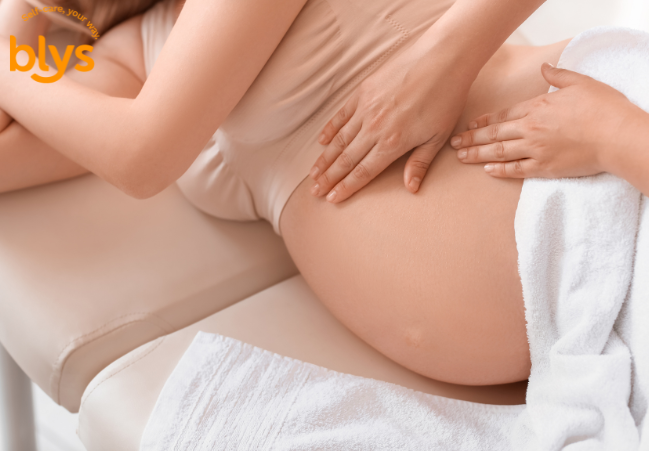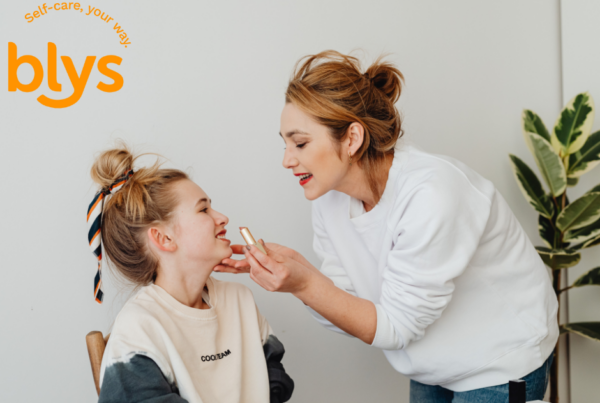
Pregnancy is a time of constant transformation. Your body works hard to support the growth of new life, which can lead to physical discomfort, hormonal shifts, and emotional ups and downs. As these changes unfold, many expecting mothers are seeking safe, effective ways to feel more comfortable and supported throughout the journey.
Prenatal massage has become a popular option, offering natural relief from common symptoms like back pain, swelling, fatigue, and tension.
What makes a difference, however, is having the right kind of massage at the right time. Each trimester comes with its own challenges. A technique that works in the second trimester might not be suitable during the first or third. This is why trimester-specific care is important: your body’s needs change as pregnancy progresses.
First Trimester Massage
The first trimester marks the beginning of major changes throughout your body. Hormone levels shift rapidly, often leading to symptoms like nausea, extreme fatigue, breast tenderness, and sensitivity to smells.
You may also experience emotional changes, including heightened anxiety, mood swings, or feelings of uncertainty especially if it’s your first pregnancy.
Although the baby is still very small during this stage, your body is already working overtime. The need for rest and gentle support becomes clear early on, and that’s where massage can offer calm and relief.
Is Massage Safe in the First Trimester?
Massage during the first trimester is considered safe when performed by a certified prenatal therapist. However, some professionals choose to avoid massage in the first 12 weeks due to concerns about miscarriage, even though no direct evidence links massage to pregnancy loss.
According to the American Pregnancy Association, prenatal massage can be beneficial when done correctly by trained providers who understand pregnancy-specific precautions. It’s always best to check with your OB-GYN before starting massage therapy.
Massage Techniques Best Suited
During the first trimester, massage should focus on relaxation, using only gentle techniques. Light-pressure Swedish massage is the most recommended option. Areas like the neck, shoulders, and head respond well to soft strokes that relieve tension without overstimulating the body. The abdominal area should be avoided, as well as pressure points around the wrists and ankles that are linked to uterine stimulation.
Second Trimester Massage
The second trimester is often referred to as the “honeymoon phase” of pregnancy. Morning sickness fades, energy returns, and life becomes more manageable. But with a growing belly comes a shift in posture and strain on your lower back and hips.
Round ligament pain, sciatic discomfort, and mild swelling in the legs are common. These changes make this trimester a prime time for therapeutic, targeted massage.
Recommended Massage Techniques
Your comfort and safety in this stage start with positioning. Side-lying with support pillows is the standard, ensuring no pressure on your belly or vena cava. A certified prenatal therapist will use gentle yet precise pressure to release tension from the lower back, hips, and glute areas often strained with a growing bump.
Lymphatic-style light massage can also alleviate mild swelling in your feet, ankles, and hands. Every technique should be adjusted specifically for your pregnancy to maximise benefits.
Benefits for Mom and Baby
Massage during the second trimester isn’t just relaxing it’s supported by research. A systematic review found it helps reduce anxiety and depression, significantly lowering cortisol (stress hormone) levels while increasing serotonin and dopamine.
A study of 84 women showed that regularly massaged pregnant women experienced less back and leg pain, reduced cortisol and norepinephrine, and elevated mood-boosting neurotransmitters.
These hormonal changes also correlated with fewer complications in labour and healthier newborn outcomes, including better birth weights and behaviour. Enhancing both physical and emotional wellbeing, trimester-specific massage supports you through this comfortable and restorative stage.
Third Trimester Massage
As you enter the third trimester, your baby’s growth accelerates, often leading to increased pelvic pressure and a feeling of heaviness. Insomnia becomes more common as discomfort rises and it’s harder to get comfortable at night.
Shortness of breath may also occur as the uterus presses upward on your diaphragm. Swollen feet and ankles are frequent due to fluid retention and lowered circulation.
Alongside these physical changes, anxiety about labour and delivery, what to expect, how it will go, and when it will happen often increases. Massage during this stage can provide both physical relief and emotional calm.
Third Trimester Massage Benefits
Third-trimester massage offers multiple benefits to help you feel more comfortable and prepared. It eases lower back pain by relieving tension in the lumbar and pelvic muscles, reduces leg cramps, and helps with fluid retention. Better circulation can support improved sleep and help regulate your nervous system so you feel more relaxed overall.
Research supports the connection between prenatal massage and positive labour outcomes. A 2010 review found that women who received massage during pregnancy experienced lower anxiety, reduced pain medication usage, and shorter labour times. Other studies indicate that massage and acupressure during labour may help manage pain and decrease labour duration.
Safety Precautions
During the third trimester, safety takes centre stage:
- Avoid lying flat on your back to prevent compression of the vena cava; side-lying is safer and more comfortable.
- Skilled therapists will avoid deep pressure on certain acupressure points that may stimulate uterine contractions.
- Always choose a licensed prenatal massage therapist who is certified and experienced working with pregnancy clients.
A knowledgeable therapist understands how to modify techniques, positioning, and pressure to suit your comfort and stage of pregnancy.
Don’t hesitate to speak up during your session your comfort and safety should always come first. Third-trimester massage should leave you feeling more supported, not stressed, as you prepare for birth.
Want to learn how massage supports women through every phase of life? Explore the benefits of massage for women’s health at every stage.
Why Prenatal Massage Should Be Trimester-Specific
Pregnancy is not a one-size-fits-all experience, and neither is prenatal massage. Each trimester brings different physiological and hormonal changes that affect your comfort, mobility, and overall wellbeing. A massage that works in the second trimester may not be suitable early on or closer to your due date.
Here’s why tailored care matters:
- First trimester: The body is still adjusting to early hormonal shifts. Massage should focus on relaxation, using only light pressure while avoiding certain reflex points.
- Second trimester: As your belly grows and posture shifts, massage can target muscle tension in the lower back, hips, and legs while improving circulation.
- Third trimester: Safety becomes even more important. Positioning must be adjusted, and techniques should focus on easing pelvic pressure, swelling, and sleep disruptions.
Using trimester-specific techniques helps reduce discomfort while avoiding strain or injury. It ensures the massage complements your body’s needs, not complicates them. All Blys therapists are trained in prenatal care, including safe, trimester-specific techniques so you’re in expert hands every step of the way.
How Often Should You Get a Pregnancy Massage?
The ideal frequency for prenatal massage depends on your trimester, overall health, and how your body responds. While there’s no one-rule-fits-all schedule, general guidelines can help you decide what’s right for you.
- First trimester: If your OB-GYN approves, monthly sessions can help manage stress, tension, and early fatigue. However, some may choose to wait until the second trimester, especially if there are risks or discomfort during early pregnancy.
- Second trimester: As your body begins to carry more weight and physical changes set in, massage every two weeks is a popular choice for ongoing relief and improved circulation.
- Third trimester: Weekly massage can help ease lower back pain, swelling, and poor sleep as you near your due date.
You can always tailor the frequency based on how you’re feeling. If you’re experiencing heightened stress, sciatica, or sleep issues, more frequent sessions may be beneficial. Before starting any massage routine, speak with your OB-GYN to make sure it’s a safe choice for your specific pregnancy.
What to Expect from a Blys In-Home Pregnancy Massage
Getting a prenatal massage with Blys is simple, convenient, and designed to make you feel completely at ease. Instead of having to drive to a clinic or spa, a certified mobile therapist comes to your home with everything needed for a safe and relaxing session.
This includes a professional massage table, fresh linens, and pregnancy-safe pillows and bolsters to ensure proper support throughout your session.
You’ll be able to enjoy your massage in the comfort of your own space-whether that’s your bedroom, living room, or wherever you feel most relaxed. There’s no need to rush out afterwards or deal with post-massage traffic. You can stay cosy and fully at ease.
Booking your session is easy through the Blys website or app. Every therapist is fully licensed, insured, and trained in prenatal massage, including techniques tailored to each trimester. With Blys, you can trust that your care is safe, personalised, and delivered on your terms.
Support That Grows With Blys
Pregnancy is a journey filled with constant change, and your body deserves care that keeps up with every stage. From early fatigue to late-term pressure and swelling, each trimester brings new challenges, and massage can be adapted to meet those changing needs with comfort and safety in mind.
Taking time for self-care isn’t just a luxury during pregnancy it’s a vital part of staying balanced, supported, and well. Whether you need help easing physical tension or want a moment of calm before birth, prenatal massage can be a powerful tool in your wellness routine.
With Blys, professional care is just a few clicks away. You get trusted support from licensed therapists without ever having to leave your home.





